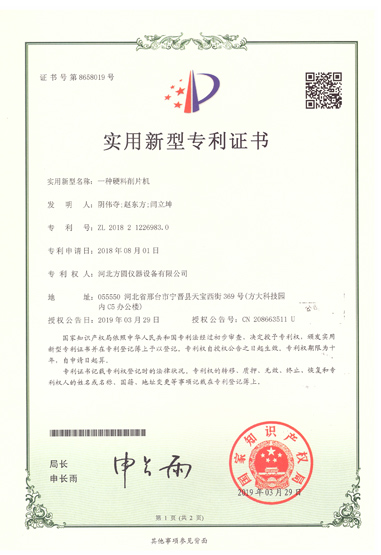computer control universal tensile testing machine
Computer-Controlled Universal Tensile Testing Machine An Overview
In the field of material testing, the universal tensile testing machine (UTM) plays a crucial role in determining the mechanical properties of various materials. With advancements in technology, the integration of computer control into these testing machines has revolutionized how engineers and researchers assess material performance. This article explores the features, benefits, and applications of computer-controlled universal tensile testing machines.
What is a Universal Tensile Testing Machine?
A universal tensile testing machine is designed to evaluate materials under tension, measuring properties such as tensile strength, yield strength, elongation, and modulus of elasticity. Traditionally, these tests were conducted using manual machines that required significant human intervention. However, the computer-controlled versions automate the entire testing process, enhancing accuracy and efficiency.
Key Features of Computer-Controlled UTMs
1. Precision Control Computer-controlled UTMs utilize advanced software to precisely control the speed and load during testing. This level of control enables the production of accurate and repeatable results, minimizing human error.
2. Data Acquisition and Analysis Equipped with high-fidelity sensors and data acquisition systems, these machines can capture real-time data during testing. The software not only records the force and elongation but also analyzes this data to generate stress-strain curves and other relevant material properties.
3. User-Friendly Interface Modern UTMs offer intuitive interfaces that allow operators to set up tests quickly. Users can easily input parameters, select test standards, and initiate tests with just a few clicks.
4. Multiple Testing Modes Unlike traditional machines, computer-controlled UTMs often provide various testing modes, including creep, fatigue, and impact testing. This versatility allows for comprehensive material analysis in one system.
computer control universal tensile testing machine

5. Remote Monitoring and Control Many advanced UTMs come equipped with remote capabilities, enabling users to monitor tests from different locations. This feature is particularly useful in laboratories where multiple tests are conducted simultaneously.
Benefits of Computer-Controlled UTMs
The adoption of computer-controlled UTMs offers numerous advantages. Firstly, the automation of testing procedures significantly reduces the time required to perform tests, allowing for increased productivity. Secondly, enhanced accuracy and repeatability lead to more reliable data, which is crucial for ensuring the quality and safety of materials used in engineering applications.
Moreover, the advanced data analysis capabilities help engineers understand material behavior better, leading to improved designs and specifications. The ability to visualize data through graphs and reports facilitates clearer communication among team members and stakeholders.
Applications of Computer-Controlled UTMs
Computer-controlled universal tensile testing machines are employed across various industries. In construction, they help determine the strength of concrete, steel, and other building materials. In the automotive sector, these machines are used to test the properties of metals and polymer composites to enhance vehicle safety and performance.
Additionally, in the electronics industry, UTMs assess the tensile properties of wires and cables to ensure reliability under stress. Aerospace agencies also utilize these machines to test materials that must withstand extreme conditions while maintaining structural integrity.
Conclusion
The evolution of the universal tensile testing machine into a computer-controlled system marks a significant advancement in material testing technology. With features that enhance precision, efficiency, and data analysis, these machines play an essential role in various industries. As technology continues to progress, the capabilities of computer-controlled UTMs will likely expand, leading to even more innovative applications and improved material performance assessment, ultimately ensuring the safety and effectiveness of engineered products.
-
Why the Conductor Resistance Constant Temperature Measurement Machine Redefines Precision
NewsJun.20,2025
-
Reliable Testing Starts Here: Why the High Insulation Resistance Measuring Instrument Is a Must-Have
NewsJun.20,2025
-
Flexible Cable Flexing Test Equipment: The Precision Standard for Cable Durability and Performance Testing
NewsJun.20,2025
-
Digital Measurement Projector: Precision Visualization for Modern Manufacturing
NewsJun.20,2025
-
Computer Control Electronic Tensile Tester: Precision and Power for the Modern Metal Industry
NewsJun.20,2025
-
Cable Spark Tester: Your Ultimate Insulation Assurance for Wire and Cable Testing
NewsJun.20,2025
 Copyright © 2025 Hebei Fangyuan Instrument & Equipment Co.,Ltd. All Rights Reserved. Sitemap | Privacy Policy
Copyright © 2025 Hebei Fangyuan Instrument & Equipment Co.,Ltd. All Rights Reserved. Sitemap | Privacy Policy
